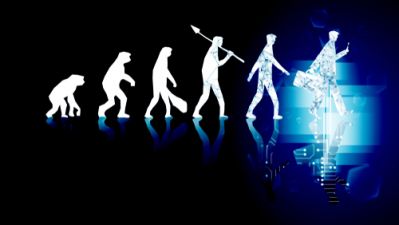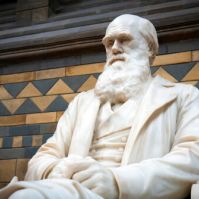 Everyone knows the basic tenet of the theory of evolution as proposed by Charles Darwin in his 1859 book “On the Origin of Species”: That given enough time, organisms change because of the mutated traits they pass down to their offspring. Sometimes a species can even transform itself into something quite different from the original.
Everyone knows the basic tenet of the theory of evolution as proposed by Charles Darwin in his 1859 book “On the Origin of Species”: That given enough time, organisms change because of the mutated traits they pass down to their offspring. Sometimes a species can even transform itself into something quite different from the original.
Darwin, an English naturalist, biologist, and geologist, proposed his theory based on the observations he made while on three separate voyages of the HMS Beagle between 1831 and 1836. While on remote islands such as the Galapagos, an archipelago of volcanic islands in the southern Pacific Ocean 605 miles west of the South American country of Ecuador, Darwin observed the birds, reptiles, and animals residing there and found them to be significantly different from the same species living elsewhere in the world. His theory: They had adapted themselves to their local environment and passed those adaptations down through the generations.
The theory of evolution was never a creation story in terms of how life arrived (or was created) on earth. Rather, it seeks to explain the process by which living organisms reproduce, adapt, and modify themselves, developing into new kinds of organisms based on those adaptations. Over the years, the modifications became known as mutations, and the theory itself became known as natural selection, i.e., nature selecting the fittest, strongest, most well-adapted organisms as the ones to reproduce, multiply, and survive.
What most people fail to realize is that Darwin wasn’t the only, or even the first, person to propose an evolutionary theory. French biologist Jean-Baptiste Lamarck did so in 1801, and British biologist Alfred Russel Wallace did likewise in 1855. But poor Wallace. He sent his papers to none other than Darwin, resulting in their joint publication one year before Darwin's “On the Origin of Species.” Wallace immediately was forgotten.
Noted Problems
The main problem with the theory of evolution is that Darwin proposed it long before the advent of genetics and molecular biology. In other words, he could only theorize the what, not the why or the how. Another huge problem is the fact that even Darwin admitted that it would take eons of time for major changes to occur within a given species, let alone species-to-species changes. Yet subsequent scientists kept discovering that major changes within a species can and do occur in as little as one generation. How was this possible?
Possible Clues
One extremely important clue emerged nearly a century after Darwin with the discovery of the now famous DNA double helix in 1953 by James Watson and Francis Crick. DNA is the molecule that contains human genes. At the same time, developmental biologist Conrad Waddington published his report on fruit flies. His research had shown that changing the temperature or inducing chemical stimuli to embryonic fruit flies caused them to produce differing wing structures. Not only did he accomplish this major change within one generation, the change was then inherited down through the subsequent generations. This rapid-changing form of evolution was named epigenetics.
New Theories
With the rapid advances in science and technology, two new evolutional theories came into being: the Neo-Lamarckian theory and the Neo-Darwinian theory. The former holds that the environment directly alters phenotypic traits; the latter holds that genetic mutations promote phenotypic variation on which natural selection acts.
But even these did not fully explain how evolution works. Now US biologist Michael Skinner and others have proposed the newest theory: the Unified Evolution Theory. This paradigm-shifting theory, blending Neo-Lamarckian theory with Neo-Darwinian theory, holds that “environmental epigenetic alterations promote genetic mutations to alter genotypic variation,” and that “environmental epigenetics and genetic mutations both promote phenotypic variation on which natural selection acts” as per a study published in Genome Biology and Evolution.
This unified theory expands our understanding of evolution’s molecular aspects and provides solutions for such issues as rapid evolutionary phenomena. It also expands on the idea that the environment can and does impact evolution.



